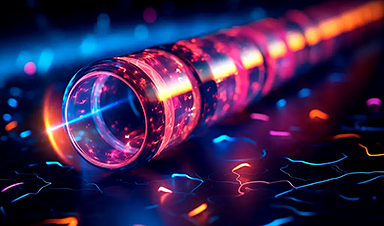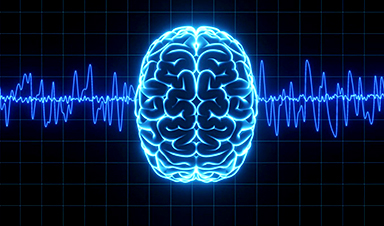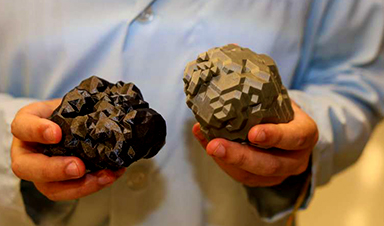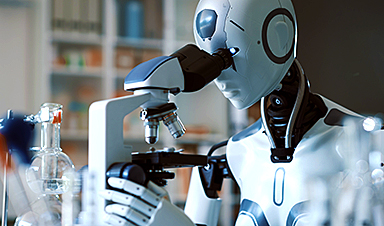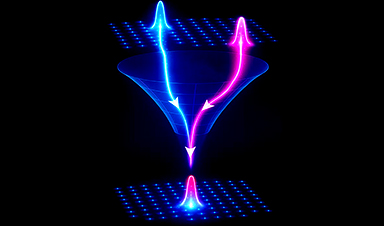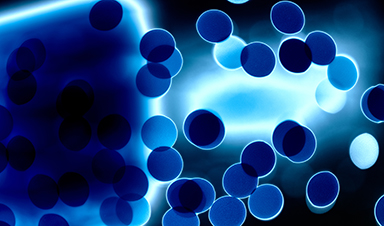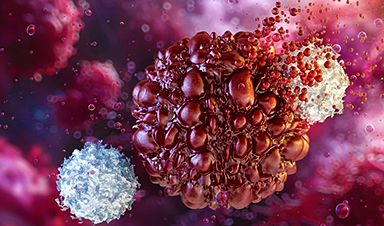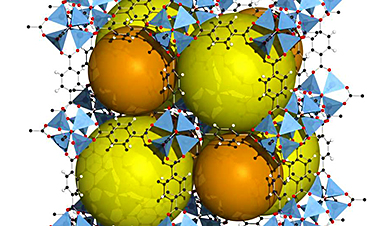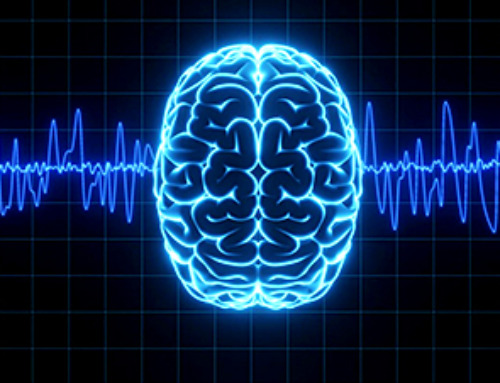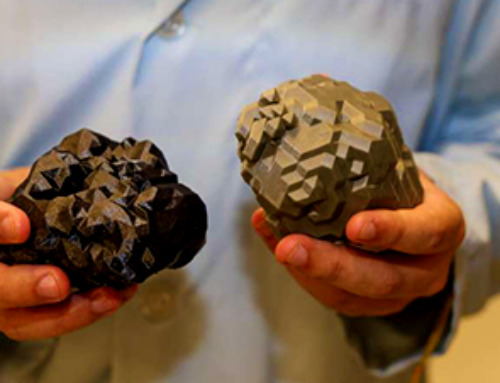Researchers succeeded for the first time in accelerating electrons using a nano device.
Particle accelerators are crucial tools in a wide variety of areas in industry, research, and the medical sector. The space these machines require ranges from a few square meters to large research centers. Using lasers to accelerate electrons within a photonic nanostructure constitutes a microscopic alternative with the potential of generating significantly lower costs and making devices considerably less bulky.
Until now, no substantial energy gains have been demonstrated. In other words, it has not been shown that electrons really have increased in speed significantly. A team of laser physicists at Friedrich-Alexander-Universität Erlangen-Nürnberg (FAU) has now succeeded in demonstrating the first nanophotonic electron accelerator – at the same time as colleagues from Stanford University.

For the first time, FAU researchers have succeeded in measurably accelerating electrons in structures that are only a few nanometers in size. In the picture, you can see the microchip with the structures and, in comparison, a 1 cent coin. Credit: FAU/Julian Litzel
Particle Accelerators and Their Nanophotonic Evolution
When people hear "particle accelerator," most will probably think of CERN's Large Hadron Collider in Geneva, the approximately 27-kilometer-long ring-shaped tunnel that researchers from around the globe used to conduct research into unknown elementary particles. Such huge particle accelerators are the exception, however. We are more likely to encounter them in other places in our day-to-day lives, for example in medical imaging procedures or during radiation to treat tumors. Even then, however, the devices are several meters in size and still rather bulky, with room for improvement in terms of performance.
Particles are accelerated by ultrashort laser pulses illuminating the nanostructures. "The dream application would be to place a particle accelerator on an endoscope in order to be able to administer radiotherapy directly at the affected area within the body," explains Dr. Tomáš Chlouba, one of the four lead authors of the recently published paper.
This dream may still be far beyond the grasp of the FAU team from the Chair of Laser Physics led by Prof. Dr. Peter Hommelhoff and consisting of Dr. Tomáš Chlouba, Dr. Roy Shiloh, Stefanie Kraus, Leon Brückner and Julian Litzel, but they have now succeeded in taking a decisive step in the right direction by demonstrating the nanophotonic electron accelerator. "For the first time, we really can speak about a particle accelerator on a chip," enthuses Dr. Roy Shiloh.
Guiding Electrons + Acceleration = Particle Accelerator
Just over two years ago the team made their first major breakthrough: they succeeded in using the alternating phase focusing (APF) method from the early days of acceleration theory to control the flow of electrons in a vacuum channel over long distances. This was the first major step on the way towards building a particle accelerator. Now, all that was needed to gain major amounts of energy was acceleration.
"Using this technique, we have now succeeded not only in guiding electrons but also in accelerating them in these nano-fabricated structures over a length of half a millimeter," explains Stefanie Kraus. Whilst this might not sound like much of an achievement to many, it is a huge success for the field of accelerator physics. "We gained energy of 12 kiloelectron volts. That is a 43 percent gain in energy," explains Leon Brückner.
In order to accelerate the particles over such large distances (when seen from the nanoscale), the FAU physicists combined the APF method with specially developed pillar-shaped geometrical structures.
This demonstration is just the beginning, however. Now the aim is to increase the gain in energy and electron current to such an extent that the particle accelerator on a chip is sufficient for applications in medicine. For this to be the case, the gain in energy would have to be increased by a factor of approximately 100. "In order to achieve higher electron currents at higher energies at the output of the structure, we will have to expand the structures or place several channels next to each other," Tomáš Chlouba explains the next steps of the FAU laser physicists.
A Global Pursuit for Miniaturization
What the Erlangen laser physicists succeeded in doing was demonstrated almost simultaneously by colleagues at Stanford University in the United States: Their results are currently under review, but can be viewed on a repository. The two teams are working together on the realization of the "Accelerator on a chip" in a project funded by the Gordon and Betty Moore Foundation.
"In 2015, the FAU- and Stanford-led ACHIP team had a vision for a revolutionary approach to particle accelerator design," said Dr. Gary Greenburg of the Gordon and Betty Moore Foundation, "and we are delighted that our support has helped turn this vision into reality."
Reference: "Coherent nanophotonic electron accelerator" by Tomáš Chlouba, Roy Shiloh, Stefanie Kraus, Leon Brückner, Julian Litzel and Peter Hommelhoff, 18 October 2023, Nature.
DOI: 10.1038/s41586-023-06602-7
![]()
News
How Far Can the Body Go? Scientists Find the Ultimate Limit of Human Endurance
Even the most elite endurance athletes can’t outrun biology. A new study finds that humans hit a metabolic ceiling at about 2.5 times their resting energy burn. When ultra-runners take on races that last [...]
World’s Rivers “Overdosing” on Human Antibiotics, Study Finds
Researchers estimate that approximately 8,500 tons of antibiotics enter river systems each year after passing through the human body and wastewater treatment processes. Rivers spanning millions of kilometers across the globe are contaminated with [...]
Yale Scientists Solve a Century-Old Brain Wave Mystery
Yale scientists traced gamma brain waves to thalamus-cortex interactions. The discovery could reveal how brain rhythms shape perception and disease. For more than a century, scientists have observed rhythmic waves of synchronized neuronal activity [...]
Can introducing peanuts early prevent allergies? Real-world data confirms it helps
New evidence from a large U.S. primary care network shows that early peanut introduction, endorsed in 2015 and 2017 guidelines, was followed by a marked decline in clinician-diagnosed peanut and overall food allergies among [...]
Nanoparticle blueprints reveal path to smarter medicines
Lipid nanoparticles (LNPs) are the delivery vehicles of modern medicine, carrying cancer drugs, gene therapies and vaccines into cells. Until recently, many scientists assumed that all LNPs followed more or less the same blueprint, [...]
How nanomedicine and AI are teaming up to tackle neurodegenerative diseases
When I first realized the scale of the challenge posed by neurodegenerative diseases, such as Alzheimer's, Parkinson's disease and amyotrophic lateral sclerosis (ALS), I felt simultaneously humbled and motivated. These disorders are not caused [...]
Self-Organizing Light Could Transform Computing and Communications
USC engineers have demonstrated a new kind of optical device that lets light organize its own route using the principles of thermodynamics. Instead of relying on switches or digital control, the light finds its own [...]
Groundbreaking New Way of Measuring Blood Pressure Could Save Thousands of Lives
A new method that improves the accuracy of interpreting blood pressure measurements taken at the ankle could be vital for individuals who are unable to have their blood pressure measured on the arm. A newly developed [...]
Scientist tackles key roadblock for AI in drug discovery
The drug development pipeline is a costly and lengthy process. Identifying high-quality "hit" compounds—those with high potency, selectivity, and favorable metabolic properties—at the earliest stages is important for reducing cost and accelerating the path [...]
Nanoplastics with environmental coatings can sneak past the skin’s defenses
Plastic is ubiquitous in the modern world, and it's notorious for taking a long time to completely break down in the environment - if it ever does. But even without breaking down completely, plastic [...]
Chernobyl scientists discover black fungus feeding on deadly radiation
It looks pretty sinister, but it might actually be incredibly helpful When reactor number four in Chernobyl exploded, it triggered the worst nuclear disaster in history, one which the surrounding area still has not [...]
Long COVID Is Taking A Silent Toll On Mental Health, Here’s What Experts Say
Months after recovering from COVID-19, many people continue to feel unwell. They speak of exhaustion that doesn’t fade, difficulty breathing, or an unsettling mental haze. What’s becoming increasingly clear is that recovery from the [...]
Study Delivers Cancer Drugs Directly to the Tumor Nucleus
A new peptide-based nanotube treatment sneaks chemo into drug-resistant cancer cells, providing a unique workaround to one of oncology’s toughest hurdles. CiQUS researchers have developed a novel molecular strategy that allows a chemotherapy drug to [...]
Scientists Begin $14.2 Million Project To Decode the Body’s “Hidden Sixth Sense”
An NIH-supported initiative seeks to unravel how the nervous system tracks and regulates the body’s internal organs. How does your brain recognize when it’s time to take a breath, when your blood pressure has [...]
Scientists Discover a New Form of Ice That Shouldn’t Exist
Researchers at the European XFEL and DESY are investigating unusual forms of ice that can exist at room temperature when subjected to extreme pressure. Ice comes in many forms, even when made of nothing but water [...]
Nobel-winning, tiny ‘sponge crystals’ with an astonishing amount of inner space
The 2025 Nobel Prize in chemistry was awarded to Richard Robson, Susumu Kitagawa and Omar Yaghi on Oct. 8, 2025, for the development of metal-organic frameworks, or MOFs, which are tunable crystal structures with extremely [...]
